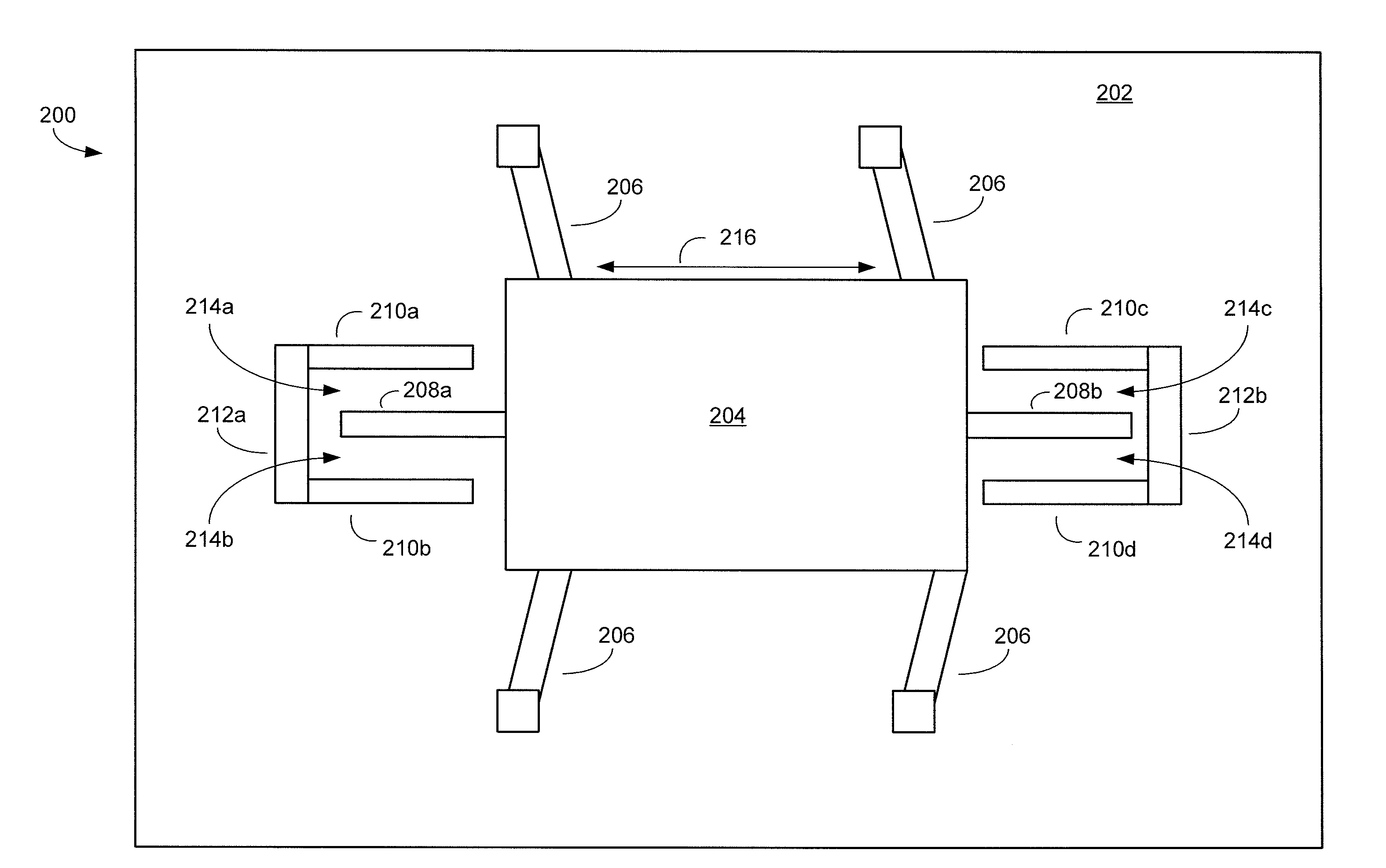Highly sensitive capacitive sensor and methods of manufacturing the same
a capacitive sensor, high-sensitivity technology, applied in the direction of speed/acceleration/shock measurement, measurement devices, instruments, etc., can solve the problems of non-linear displacement of the proof mass, significant damping effect, and non-linear relationship between the change, so as to achieve the effect of negligible effect on the linearity relatively high standing capacity of the micro-machined capacitive sensor
- Summary
- Abstract
- Description
- Claims
- Application Information
AI Technical Summary
Benefits of technology
Problems solved by technology
Method used
Image
Examples
Embodiment Construction
[0021]Micro-machined capacitive sensors implemented in micro-electro-mechanical system (MEMS) processes are disclosed that have high sensitivity, while providing a relatively large linear capacitive sensing range. In accordance with the disclosed micro-machined capacitive sensors, capacitive sensing is achieved via what is referred to herein as “variable-area sensing”, which employs a transduction mechanism in which the relationship between changes in the capacitance of variable, parallel-plate capacitors and displacements of a proof mass is generally linear. Each respective parallel-plate capacitor is formed by a finger / electrode pair, in which both the finger and the electrode have rectangular tooth profiles that include a number of substantially rectangular teeth. Because changes in an overlapping area of the parallel plates are multiplied by the number of rectangular teeth, while the standing capacity of the micro-machined capacitive sensor remains relatively high, the sensitivi...
PUM
| Property | Measurement | Unit |
|---|---|---|
| mass | aaaaa | aaaaa |
| geometric shape | aaaaa | aaaaa |
| capacitance | aaaaa | aaaaa |
Abstract
Description
Claims
Application Information
 Login to View More
Login to View More - R&D
- Intellectual Property
- Life Sciences
- Materials
- Tech Scout
- Unparalleled Data Quality
- Higher Quality Content
- 60% Fewer Hallucinations
Browse by: Latest US Patents, China's latest patents, Technical Efficacy Thesaurus, Application Domain, Technology Topic, Popular Technical Reports.
© 2025 PatSnap. All rights reserved.Legal|Privacy policy|Modern Slavery Act Transparency Statement|Sitemap|About US| Contact US: help@patsnap.com



